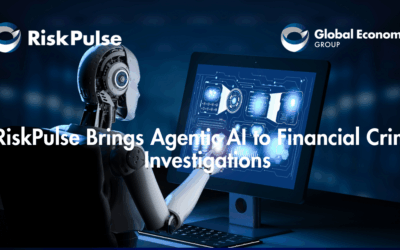In August 2025, the U.S. Department of the Treasury released a Request for Comment (RFC), inviting industry experts, technologists, and the public to suggest innovative ways to identify and prevent illicit finance involving digital assets. This effort is more than just a bureaucratic formality; it signifies a major shift in federal digital asset policy, reflecting both a response to previous regulatory failures and an active effort to promote responsible innovation through clarity and industry involvement.
The Context: From Enforcement-First to Innovation-First Regulation
The Previous Administration: Limited Guidance, Unresolved Turf Wars, and Enforcement Reliance
For much of the last decade, U.S. digital asset regulation was marked by ambiguity, confusion, and fragmentation:
- Minimal Practical Guidance: Financial institutions routinely grappled with a lack of concrete, operational regulatory guidance. Agencies provided few user-friendly guidelines for how core compliance matters—such as wallet screening, decentralized finance (DeFi) oversight, or stablecoin risk management—should be addressed in practice.
- Regulatory Turf Wars: Jurisdictional boundaries between the Securities and Exchange Commission (SEC) and Commodity Futures Trading Commission (CFTC) remained largely unsettled. Both agencies extended their oversight through overlapping or sometimes conflicting statements and actions, leaving regulated entities without clear answers as to what constituted a security, a commodity, or something else entirely.
- Enforcement as Rulemaking: With little in the way of formal guidance or collaborative policymaking, the prior administration leaned heavily on investigation and enforcement as a way of shaping market behavior. High-profile actions—some against major firms and novel technologies—often proved unsuccessful or yielded ambiguous legal signals, fueling uncertainty and chilling risk-taking and innovation.
The result was a volatile environment where institutions were hesitant to offer new digital asset services, and those who attempted innovation often found themselves caught between unclear rules and unpredictable enforcement.
The Current Administration’s Approach: Engagement, Clarity, and Support for Innovation
2025 has marked a turning point. The Treasury’s RFC, grounded in the GENIUS Act and January’s Executive Order 14178, signals the current administration’s drive to:
- Solicit and Reflect Industry Input: For the first time, financial institutions, technology companies, and the public are invited to shape the compliance and risk management agenda, providing on-the-ground perspectives on APIs, AI, digital identity verification, and blockchain analytics for financial crime detection.
- Promote Responsible Digital Asset Innovation: Instead of viewing crypto and blockchain technology only through the lens of risk, the administration’s policy now recognizes their potential benefits. The government aims to foster appropriate applications of these innovations while ensuring systems are protected against abuse.
- Move Toward Regulatory Clarity: Priority is being given to harmonizing standards, resolving interagency ambiguities (especially between the SEC and CFTC), and offering technology-neutral frameworks that empower institutions to innovate with confidence and within known guardrails.
- Align with Global Developments: Policymakers stress the importance of keeping U.S. regulation competitive internationally, even as they enforce a strong stance against illicit finance. Awareness of divergent approaches in the EU, UK, Singapore, and other financial centers is a prominent feature of the policymaking process.
The BSA/AML Compliance Challenge in the Digital Asset Era
As digital asset adoption accelerates, regulated financial institutions face an expanding array of BSA/AML compliance challenges:
- Rapid Regulatory Change: With the shift from a reactive, enforcement-heavy approach to a forward-looking framework, institutions must recalibrate their compliance programs, often under heightened regulatory scrutiny and with new reporting and supervisory obligations. This realignment requires significant investment in legal, technical, and human capital, as well as a sensitivity to the evolving U.S. and global landscape.
- Technical and Operational Complexity: Modern digital asset compliance involves real-time data aggregation, cross-chain transaction monitoring, and nuanced risk scoring. Legacy systems, often siloed and manual, struggle to adapt, requiring upgrades to technical infrastructure and cultural transformation within compliance teams.
- Heightened Privacy, Security, and Data Integrity Demands: Advanced KYC, monitoring, and blockchain analytics solutions require vast data collection, raising the stakes for both cybersecurity and consumer privacy. Regulatory pressures on data management and reporting are increasing in parallel with the rise of criminal tactics and heightened consumer sensitivity.
- Divergent and Evolving International Standards: Differences between U.S. and non-U.S. regulatory approaches create complex compliance challenges for cross-border activities. Banks with international clients or operations must regularly reconcile and operationalize overlapping or contradictory requirements, especially as the EU’s MiCA, UK’s FCA standards, and Singapore’s MAS framework evolve.
- Balancing Innovation Against Compliance: New products and services, such as stablecoins, DeFi offerings, and third-party wallets, require compliance strategies that can adapt quickly to changing technology and risk models, while remaining consistent with evolving regulation and enforcement priorities.
Treasury’s Focus: The Four Pillars of Technological Opportunity
The RFC highlights four critical technology domains where innovation, clarity, and efficiency can intersect to improve BSA/AML outcomes:
- Application Programming Interfaces (APIs): APIs allow seamless, real-time data exchange between internal systems and third parties. Financial institutions deploying APIs for digital assets must prioritize strong governance, technical resilience, privacy management, and regulatory agility to maintain compliance and protect their customers.
- Artificial Intelligence (AI): Both predictive and generative AI can automate fraud and anomaly detection, accelerate investigations, and synthesize complex transaction and identity data, all while enhancing model explainability and risk management.
- Digital Identity Verification: Advanced digital identity solutions, using biometrics, tokenized credentials, or portable digital IDs, can address core issues in onboarding, authentication, and secure service provision, with emerging use cases in DeFi and automated compliance.
- Blockchain Technology and Monitoring: Direct blockchain analytics, forensic tracing, and risk scoring tools enable cryptographic and activity-based monitoring, linking on-chain behavior to off-chain identity, sanctions, and blocklist data.
Generative AI: A Double-Edged Sword in the Compliance Arsenal
Leveraging Generative AI for Financial Crime Detection
Financial institutions are adopting generative AI to:
- Automate and Strengthen Transaction Monitoring: Advanced models can scan multi-chain, multi-asset activity, flagging anomalies and previously unseen typologies, and providing continuous risk scoring at scale.
- Expedite and Improve SAR Filing: Natural language generation synthesizes complex data, produces draft suspicious activity narratives, and reduces the labor and cycle time required for human investigators.
- Enhance Identity Proofing: Generative AI supports sophisticated KYC and CDD procedures by cross-verifying biometrics, documents, and behavioral signals, increasingly crucial as deepfake and synthetic identity risks mount.
- Risk Anticipation: These tools can correlate news, regulatory actions, and global event patterns to detect emergent threats and provide early warning to both compliance staff and regulators.
New Risks: Adversarial AI Usage in Financial Crime
Criminals are not sitting idle. They are deploying generative AI for:
- Synthetic Identity and Document Creation: Fraudulent documents, social profiles, and transaction histories are generated at scale, targeting gaps in traditional and digital onboarding systems.
- Automated Illicit Scheme Orchestration: AI bots coordinate complex webs of micro-transactions, layering, and synthetic activity across blockchains, staying ahead of static or rules-based detection systems.
- Sophisticated Smurfing and Layering: AI splits and cycles funds in an orchestrated fashion, making detection and tracing more challenging and resource-intensive.
The Importance of a Careful, Adaptive Approach
Today’s regulatory environment is not only more supportive of digital asset innovation but also significantly more demanding. While the Treasury and current administration are moving toward partnership, clarity, and standards that match international pace and best practices, the hurdles of privacy, cybersecurity, operational complexity, and cross-jurisdictional fragmentation remain prominent.
Financial institutions must:
- Stay Informed: Closely track guidance from Treasury, SEC, CFTC, and public RFC outcomes. Actively contribute to the policy dialogue to ensure that practical realities on the ground shape the next generation of rules and supervisory approaches.
- Deploy Technology Strategically: Embrace advanced compliance tools, but do so with careful governance, oversight, and controls to ensure models operate transparently and are regularly tested for bias, explainability, and effectiveness.
- Prioritize Adaptability: Build compliance frameworks that anticipate continued regulatory evolution, increased global harmonization, and dynamic technological risk. Integrate lessons and standards from non-U.S. jurisdictions whenever globally relevant.
- Protect Data and Privacy: Ensure all digital identity and analytics initiatives follow best-in-class cybersecurity and privacy protocols to comply with both U.S. and international standards.
A Collaborative Path Forward
The Treasury’s Request for Comment is both a signal and a meaningful opportunity, reflecting the shift from a past marked by uncertainty and reactivity to a future that values partnership, regulatory clarity, and technological progress.
The digital asset landscape will remain complex and challenging. However, with this new regulatory direction, financial institutions now have a clear mandate and the tools not only to comply but also to influence the standards of the future. Those that invest in strong, forward-looking compliance, stay alert to regulatory changes, and responsibly implement advanced technologies like generative AI will be best positioned to protect the financial system and promote sustainable growth in the fast-changing digital asset era.






